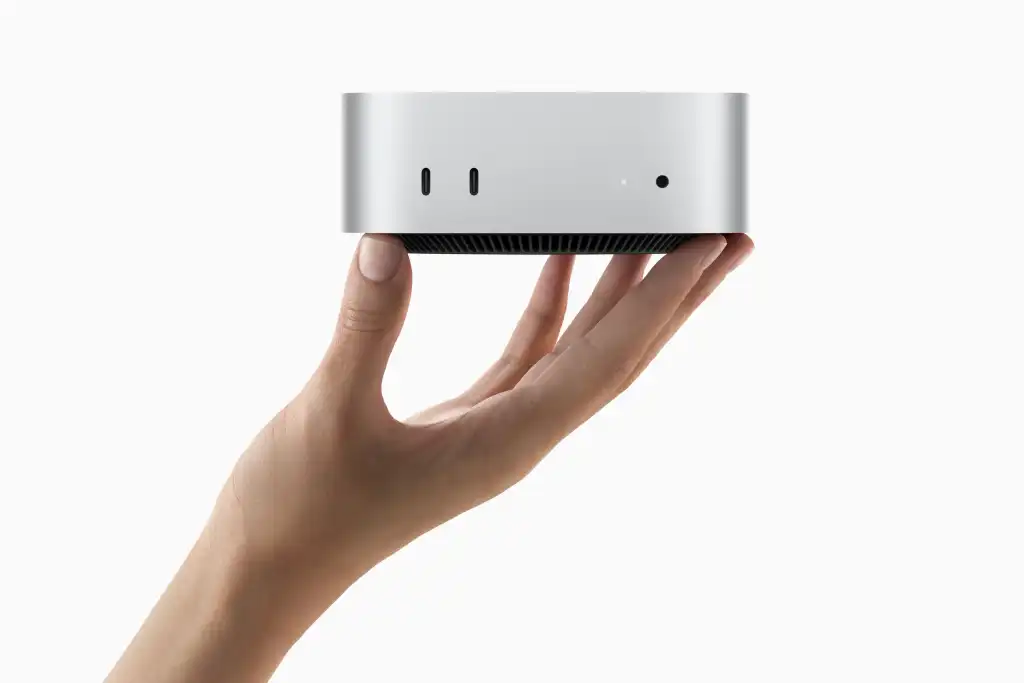The World’s Smallest, Most Powerful AI PC? It’s a Mac
Apple Redefines Computing with the world’s Smallest AI-Enhanced PC
Apple has done it once more. The technology behemoth has unveiled what it dubs the smallest and most powerful AI PC on the planet—and guess what? It is a Mac. By its own admission, Apple claims that this sets a new benchmark in compact computing and AI integration with this announcement, which sparks much hype and skepticism. Compact Mac is set to usher in a new dimension about what we think of personal computers and their role in developing AI.
What Makes This Mac So Special?
Apple’s new release combines AI capabilities and raw computing power in a compact design that is said to be smaller than a paperback book. Despite its size, the device features cutting-edge hardware, including Apple’s A18 Pro chip, which integrates a dedicated AI engine.
“We’ve built a PC that fits in the palm of your hand but outperforms anything twice its size,” said an Apple spokesperson during the product reveal.
This new Mac is designed to handle complex AI tasks, including natural language processing, real-time image generation, and data analysis, making it a game-changer for both professionals and hobbyists.
Hardware and Features: Tiny Body, Massive Power
Inside this miniature Mac lies an A18 Pro processor, paired with a neural engine capable of performing up to 50 trillion operations per second. Apple claims that the device outperforms most desktop PCs when it comes to AI workloads and intensive computational tasks.
- AI-focused operations: Ideal for machine learning applications and automation tools.
- Portability: Weighs less than half a kilogram and can easily fit into small bags.
- Energy efficiency: Runs silently with minimal power consumption, a key selling point for eco-conscious users.
“This device reflects the future of AI-enabled computing,” one tech analyst commented.
Why a Tiny AI PC Matters
Apple’s new Mac is not just about size reduction—it’s about democratizing AI tools by making them more accessible and portable. Professionals like developers, artists, and scientists will no longer need bulky, high-end machines to train and run AI models. Instead, they can take their work on the go, thanks to this tiny but powerful device.
The move also positions Apple as a leader in edge computing, where data is processed directly on devices instead of relying on cloud servers. This shift aligns with growing concerns over data privacy and the need for faster, local processing.
Challenges and Skepticism: Is It Too Good to Be True?
While Apple’s claims are impressive, some critics have raised concerns. There is skepticism about whether a device this small can truly match the performance of full-sized PCs in intensive tasks like AI training.
Others point out that Apple’s closed ecosystem could limit the usability of the AI PC for some developers. “What’s the use of a powerful AI machine if it’s locked into Apple’s proprietary ecosystem?” one critic asked.
Pricing is also a major question—while Apple has not revealed the official price, early reports suggest it could come at a premium, making it inaccessible for many casual users.
Conclusion: A Bold Move by Apple
With the launch of the world’s smallest AI PC, Apple is making a bold statement: Size no longer defines power. If the Mac lives up to the hype, it could reshape the landscape of portable computing and position Apple as a leader in AI innovation.
However, much will depend on real-world performance and whether the device can meet developer expectations beyond Apple’s ecosystem. For now, the world watches as Apple continues its tradition of redefining technology on its own terms.
